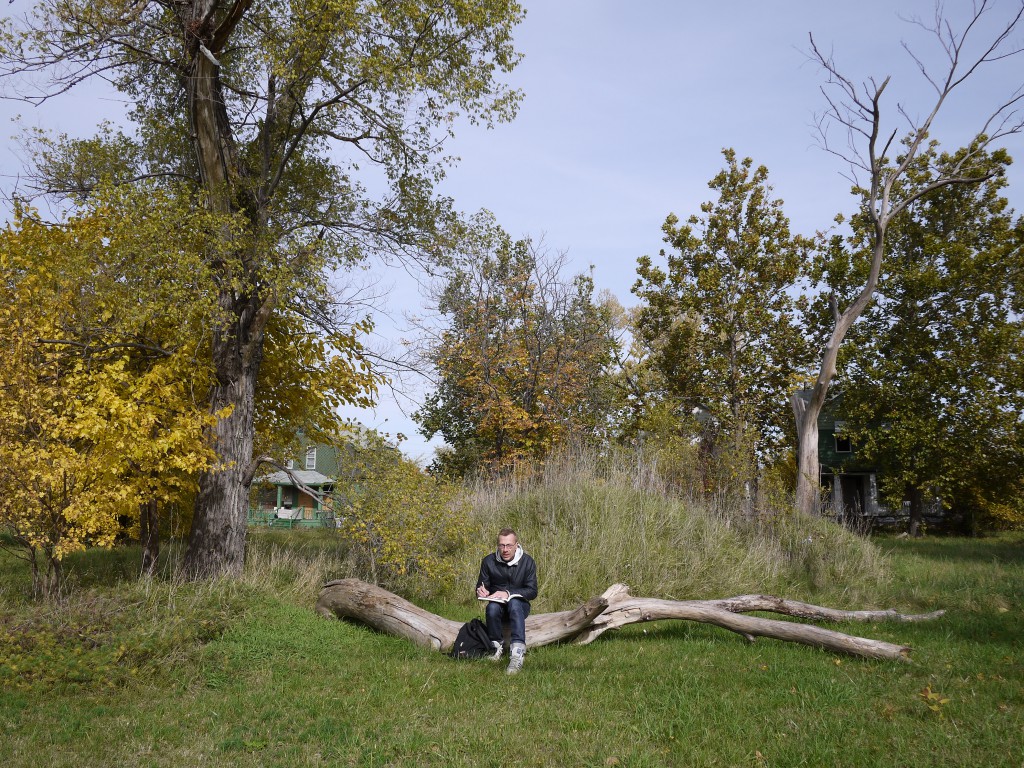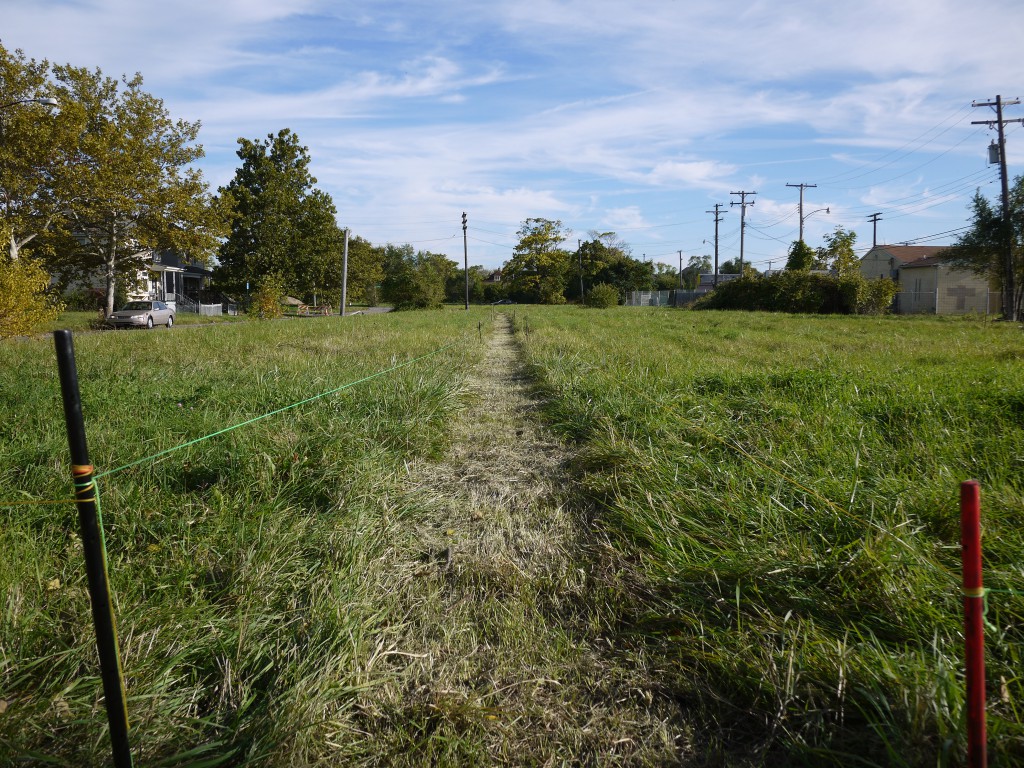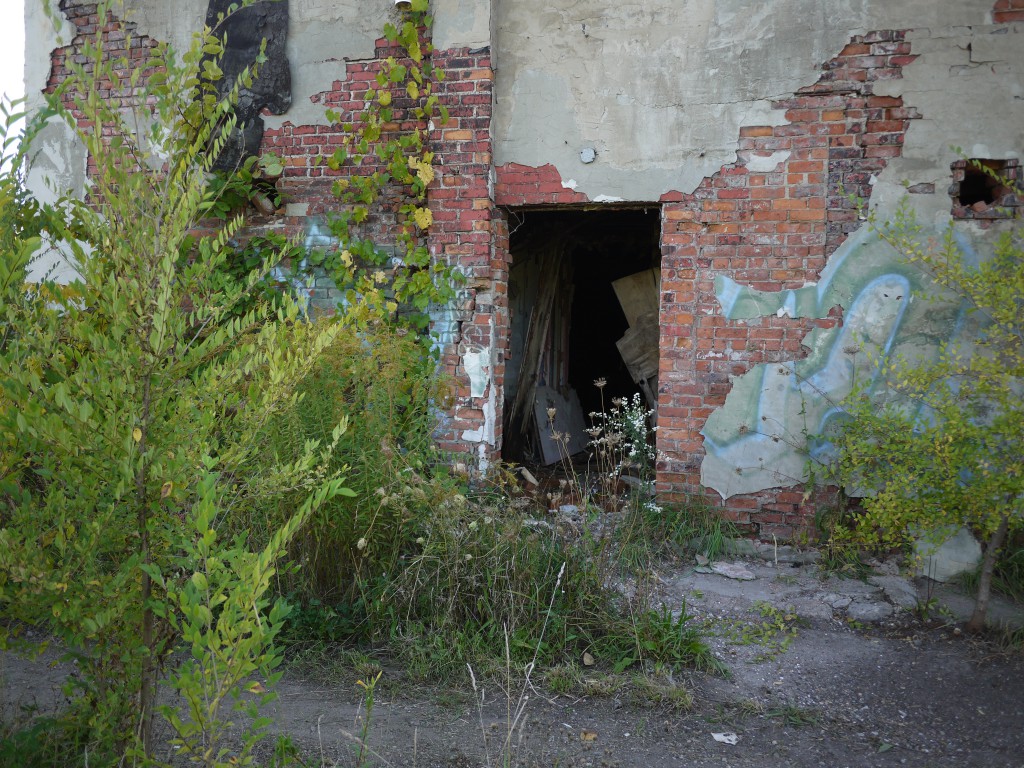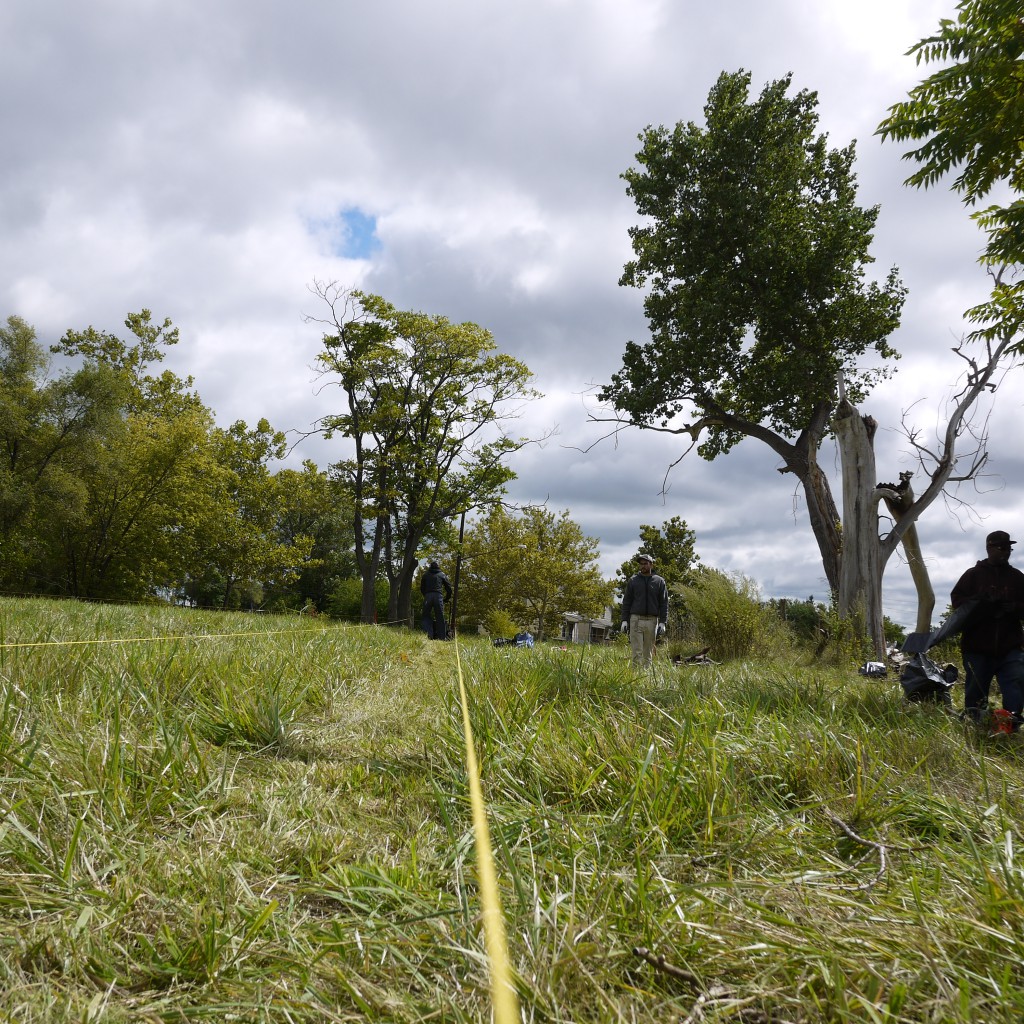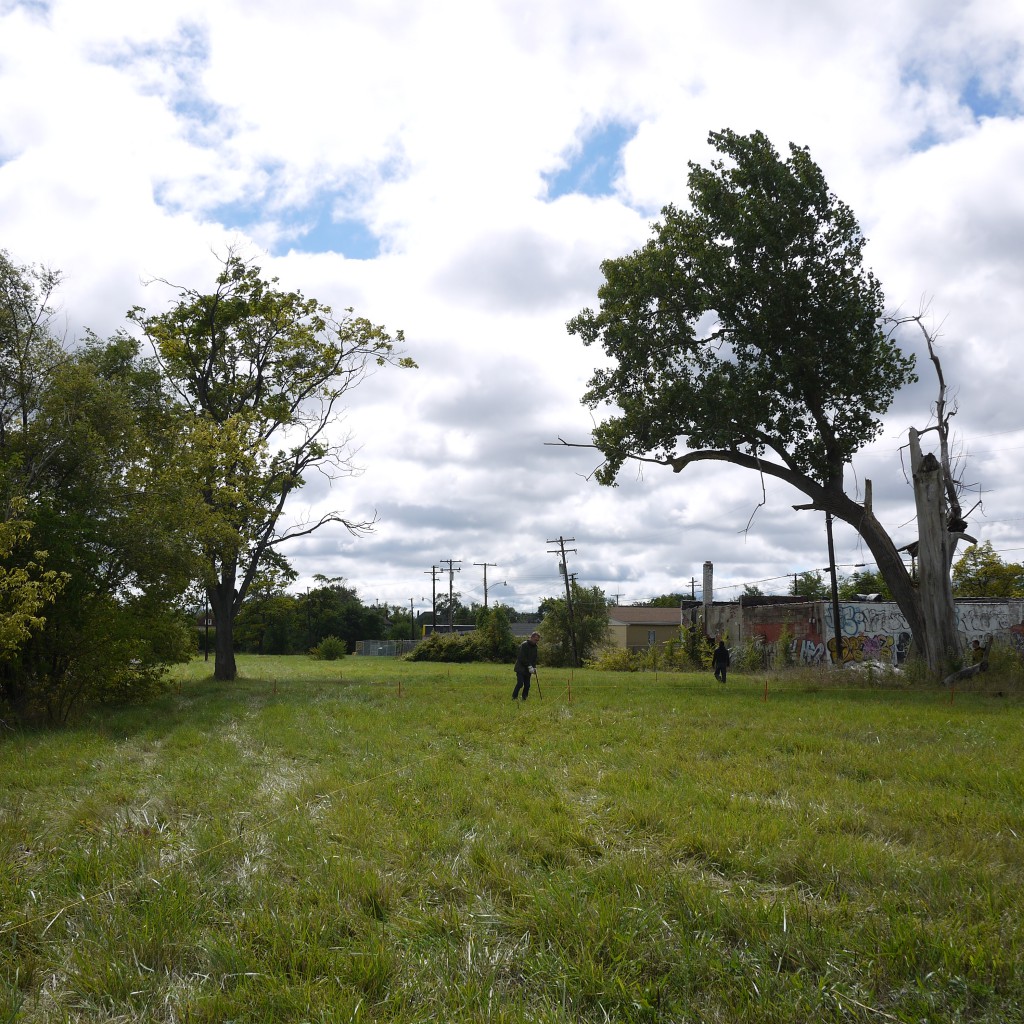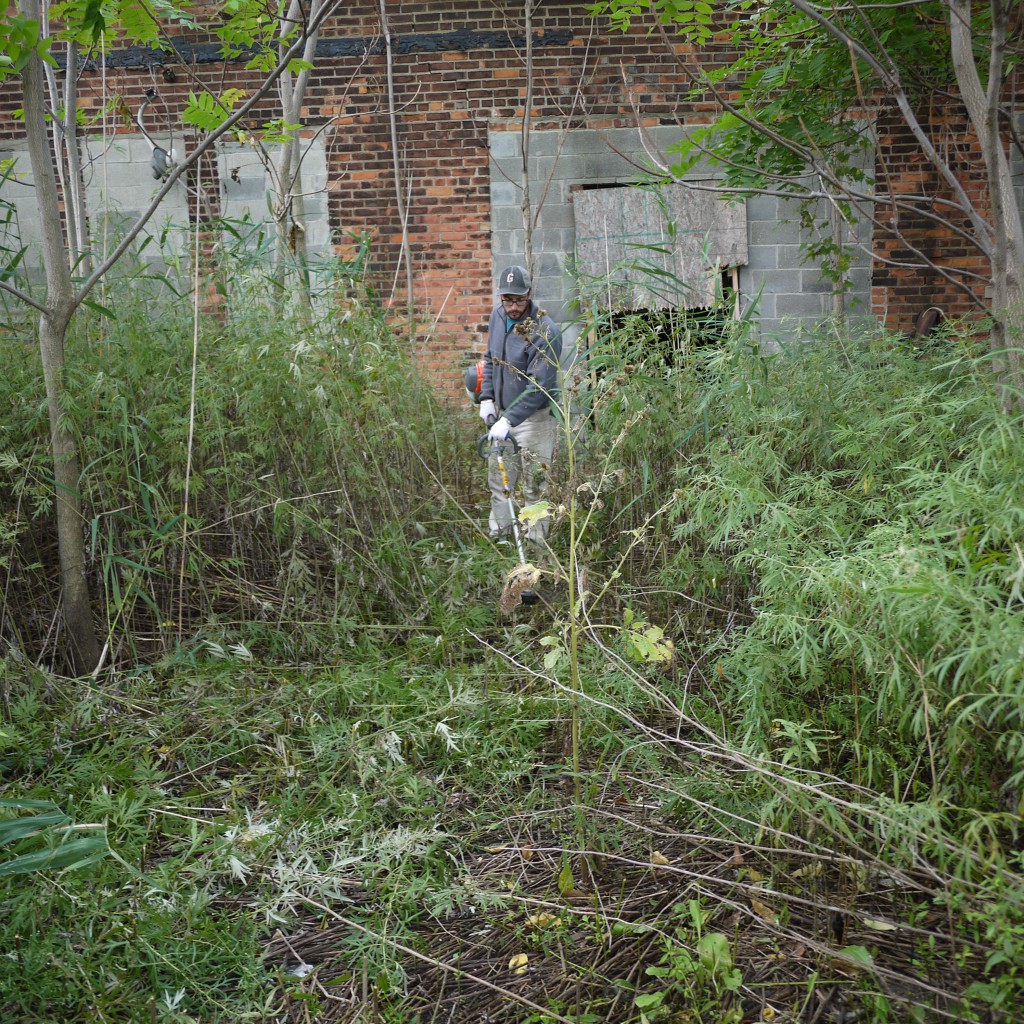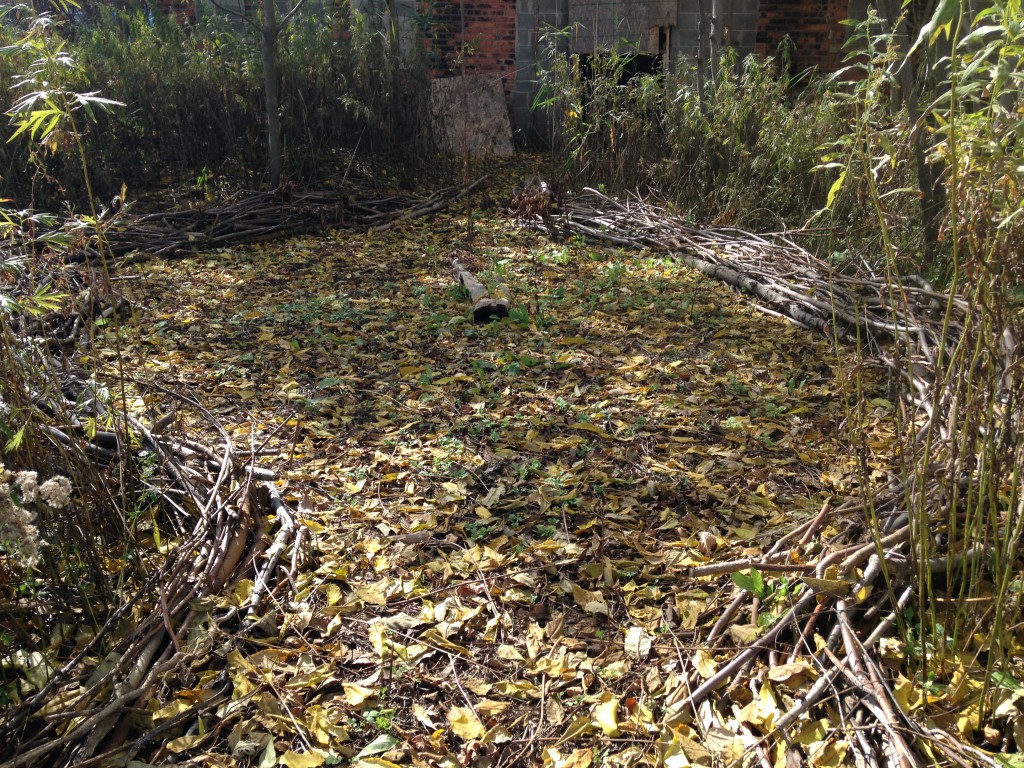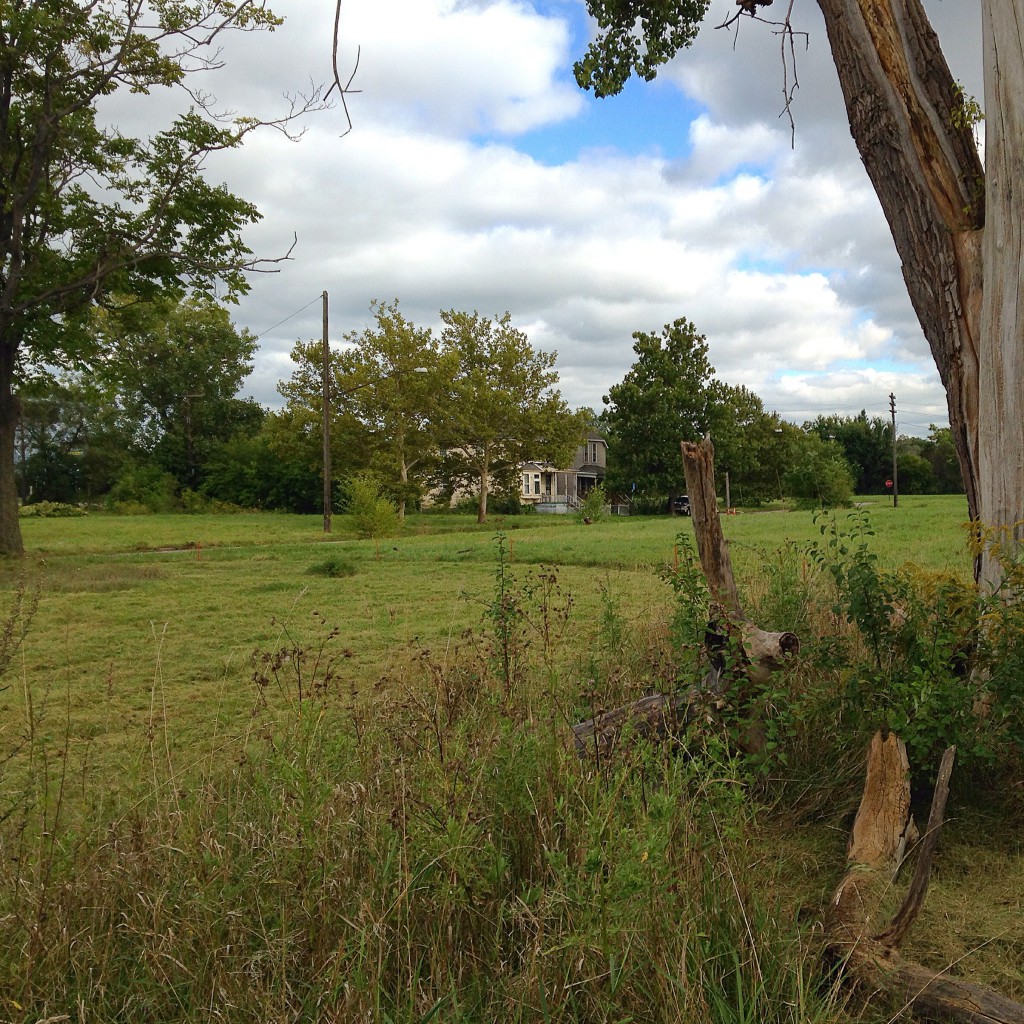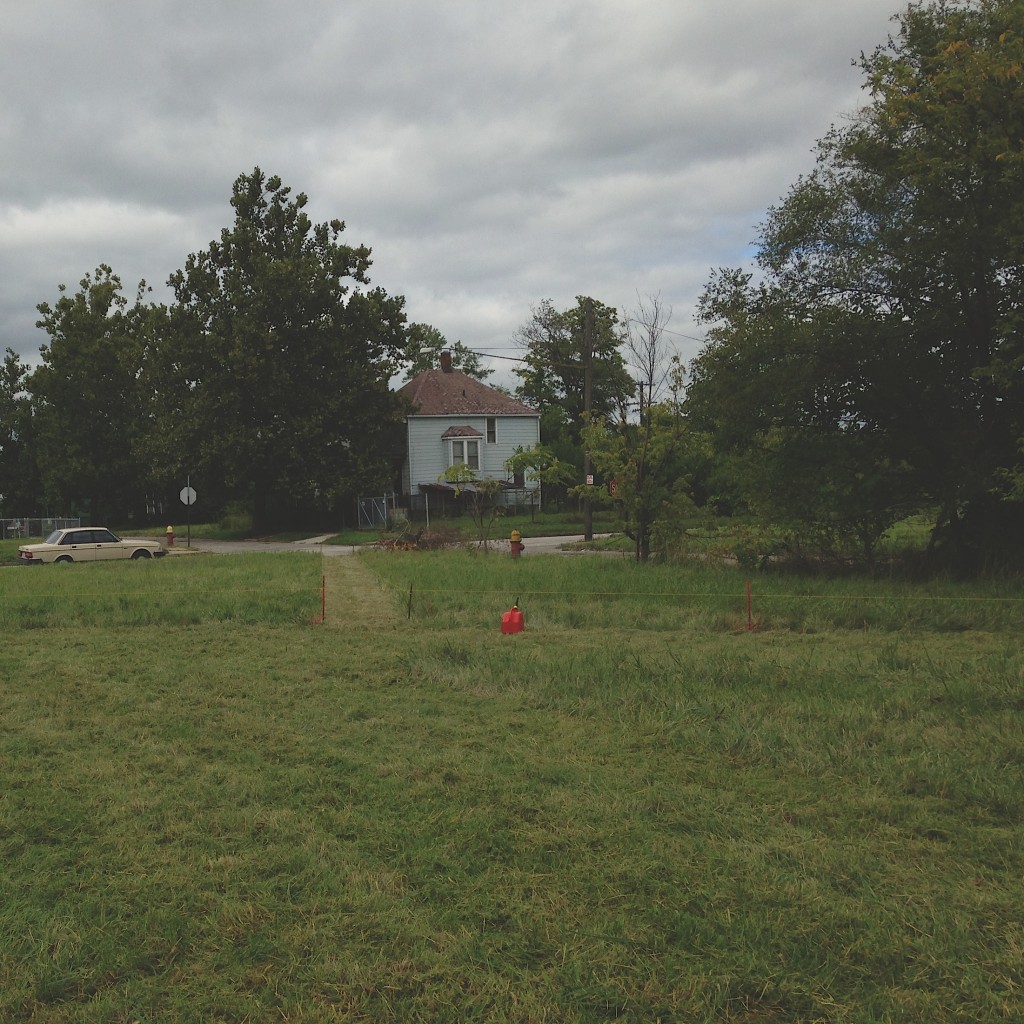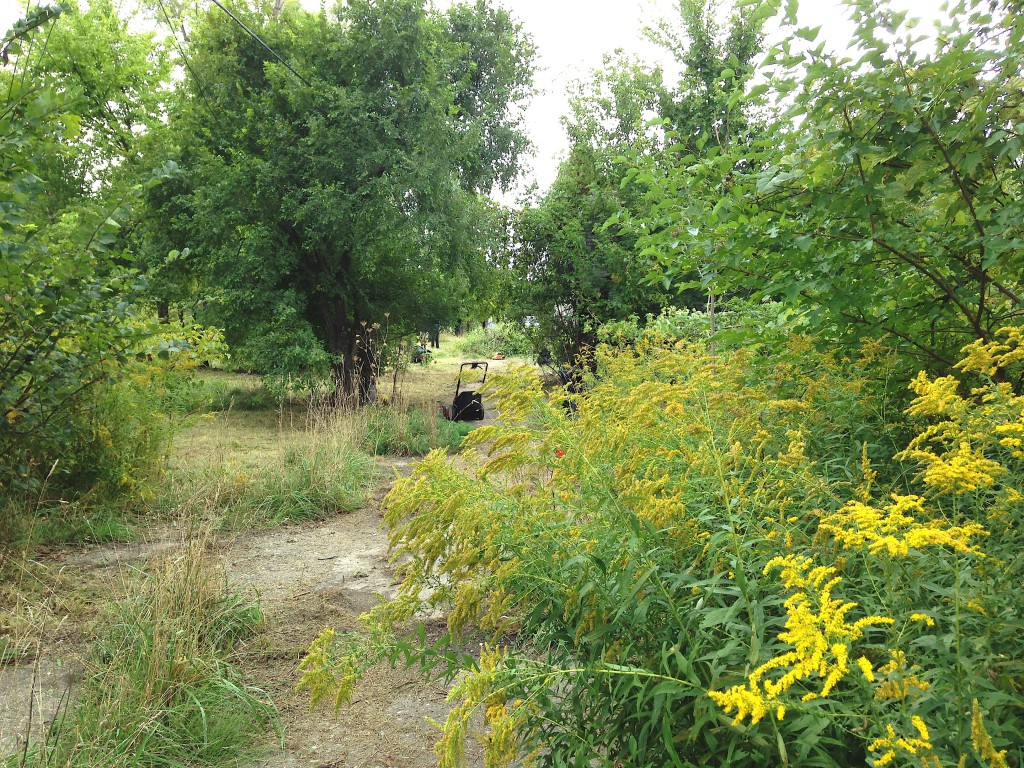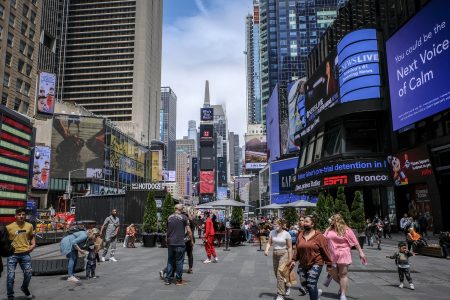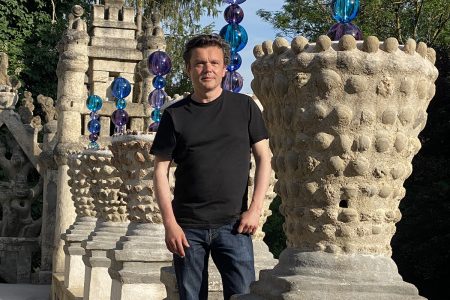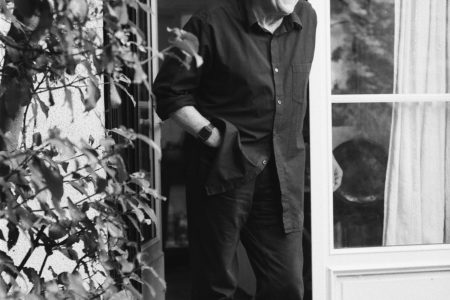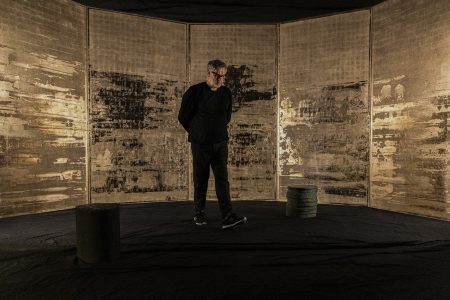Understanding the Friche – Christophe Ponceau
On an overcast day in early fall, the space between the scattered pockets of buildings along Detroit’s Oakland Avenue buzzed with promise. For someone setting their eyes on the area for the first time, this energy is not initially apparent. At first, you are struck by the vast expanses of vegetation that have slowly returned and reclaimed land that was once covered by row after row of houses. Yet after a short walk, details begin to surface: the grass is mowed in organic patterns to create small vistas; a thicket of branches sits bundled in a meandering line, forming an intimate veranda alongside a building; large, fallen branches are arranged in seemingly domestic configurations, suggesting some sort of impromptu space for entertaining. It would be shortsighted then to say that this land is abandoned. If anything, activity is sprouting up all around.
This open space in Detroit’s North End is what Christophe Ponceau, the Parisian landscape architect, would call a friche. The word lacks an equivalent in English and can only be translated approximately as “wasteland.” However, Ponceau does not see this land as having wasteful qualities. Rather, he sees latent potential in the haphazard vegetation that has grown in the absence of human intervention. Ponceau takes the existing conditions of the land and begins to tease out possibilities that reflect that land’s identity. For Ponceau, the friche is dependent on the people who interact with the landscape. It is as much about creating a physical product as it is about a concept.
In conjunction with O.N.E. Mile Detroit, a project orchestrated by Anya Sirota, Jean Louis Farges, and Halima Cassells, Ponceau has worked to identify and act upon the potential of the space. A student and protégé of the legendary landscape architect and theorist Gilles Clément, Ponceau has engaged at length with Clément’s idea of the Third Landscape: a space that was once the site of human activity but has since been abandoned and slowly returned to nature. This kind of ecology is endemic to any place that civilisation has touched and then retreated from. In Detroit, the Third Landscape is present on a much larger scale. There, Ponceau and his peers have used the space to create an American definition of the untranslatable friche.
With a team of volunteers, Ponceau has set about creating a series of gardens that reveal the potential of the local vegetation, as he has underscored in my discussions with him. Tapping into the ethos of the North End, Ponceau’s work is a dialogue between the history of the area and the present moment. He treats existing structures and young plants in a similar manner. The resulting environments reflect the complex and unique history of Detroit. Ponceau employs the art of pruning as a technique for editing a landscape. The individuals working with O.N.E. Mile are thereby able to assert their agency on the land. A novel sense of space emerges from the new avenues formed by the curated flora. In some areas, the land has become ideal for farming, yielding not only a spectacular scene, but also produce for those who tend to the crops. Land that was once fallow, absent of presence, now brims with activity. While plants may take time to grow, their upkeep and curation keep people busy while involving them in decisions about the land around them.
Ponceau has helped to set into motion a space that creates not only stunning visuals, but landscapes that excite people and compel them to act. Finding the latent potential in the friche, these landscapes become much more than gardens that fill an aesthetic void. Rather, they become participatory sites that engage with history, ecology, and politics. We can then start to understand the friche as a space, once forgotten, that now rouses us and calls us to action.
